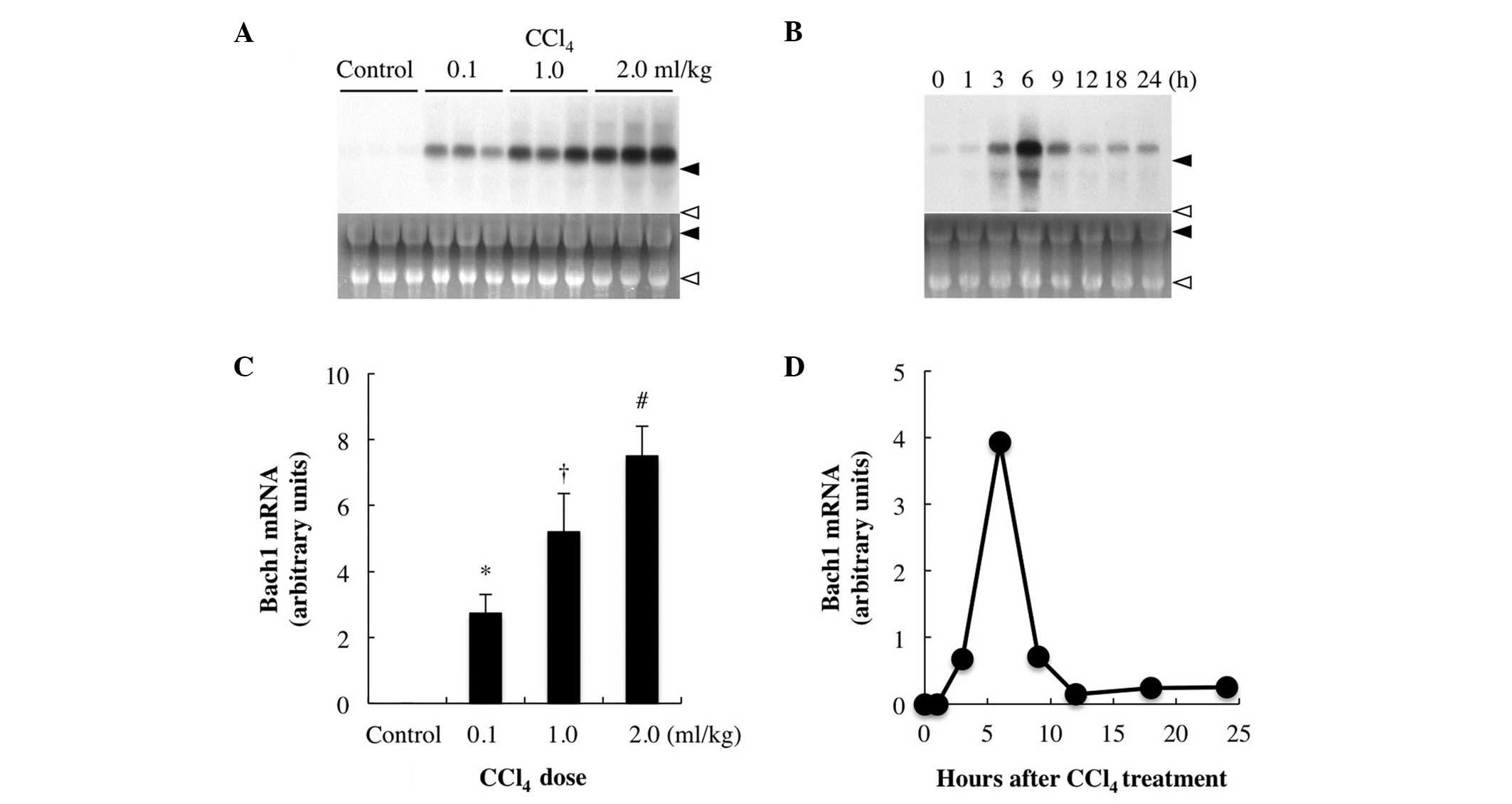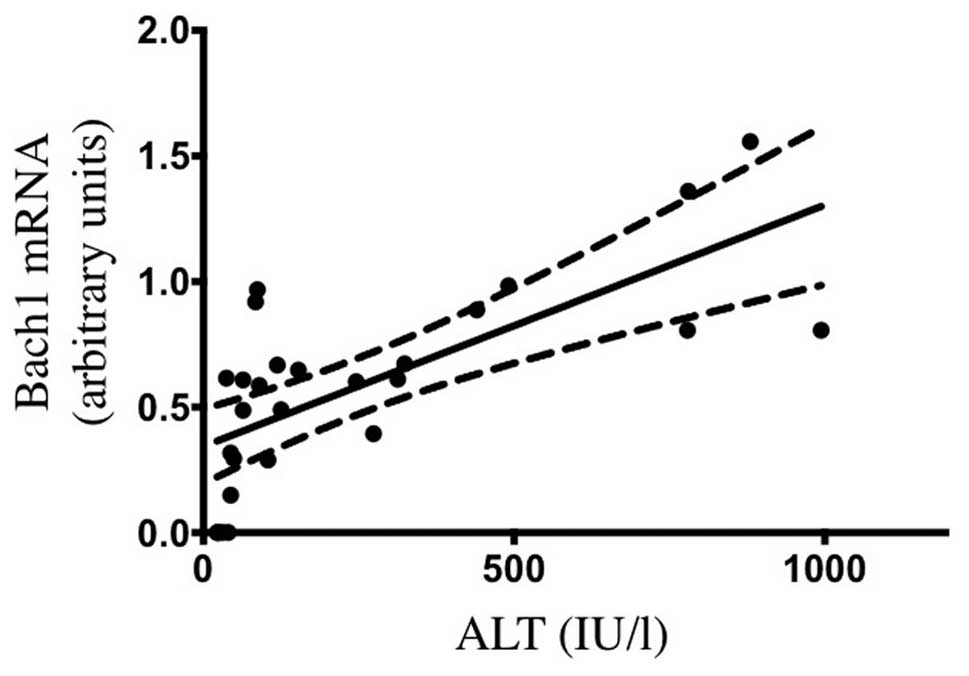Induction of hepatic Bach1 mRNA expression by carbon tetrachloride‑induced acute liver injury in rats
- Authors:
- Published online on: February 7, 2014 https://doi.org/10.3892/br.2014.235
- Pages: 359-363
Metrics:
Total
Views: 0 (Spandidos Publications: | PMC Statistics:
)
Total PDF Downloads: 0 (Spandidos Publications: | PMC Statistics:
)
Abstract
Hepatic oxidative stress is a major contributor to the pathogenesis of several acute liver diseases. Diagnostic markers of hepatic oxidative stress may facilitate early detection and intervention. Bach1 is an oxidative stress‑responsive transcription factor that represses heme oxygenase 1 (HO‑1), the rate‑limiting enzyme in the catabolism of heme, a potent pro‑oxidant. We previously demonstrated that carbon tetrachloride (CCl4) causes oxidative hepatic injury in rats, exacerbated by free heme, suggesting that CCl4 may affect Bach1 gene expression. In the present study, we used northern blot analysis to measure Bach1, HO‑1 and δ‑aminolevulinate synthase (ALAS1; a heme biosynthesis enzyme) mRNA expression levels during acute hepatic injury induced by CCl4 (at doses of 0.1, 1.0 and 2.0 ml/kg body weight). Oxidative injury was assessed by measuring serum alanine aminotransferase (ALT), hepatic malondialdehyde (MDA) and glutathione (GSH) content. Treatment with CCl4 induced a significant dose‑dependent increase in Bach1 mRNA 1‑3 h after administration. Bach1 mRNA peaked at 6 h after CCl4 treatment (1 ml/kg), followed by a rapid decrease and gradual return to baseline by 12 h after treatment. The timecourse of transient Bach1 mRNA induction roughly mirrored that of HO‑1 mRNA, while ALAS1 mRNA was inversely downregulated. Serum ALT levels and hepatic MDA concentration were significantly increased at 24 h after CCl4 treatment, while the hepatic GSH content was significantly reduced within 3 h of treatment. Serum ALT levels were positively correlated with Bach1 mRNA levels. These findings indicate that Bach1 mRNA is transiently induced in rat liver by CCl4, possibly as a regulatory mechanism to restore HO‑1 to baseline following free heme catabolism. Our findings also suggest that Bach1 mRNA expression may be a novel indicator of the extent of oxidative hepatic injury caused by free heme.













